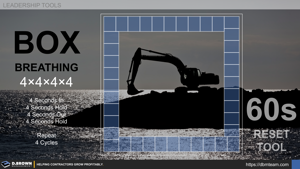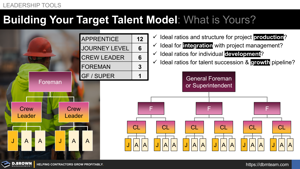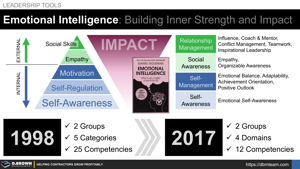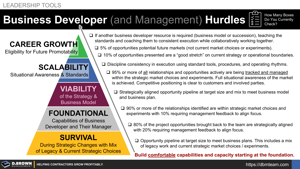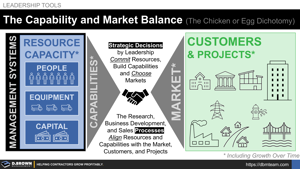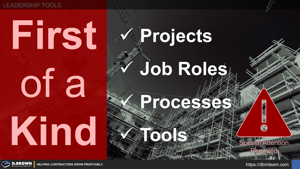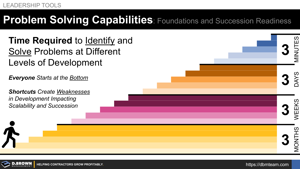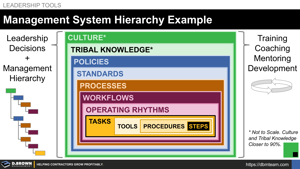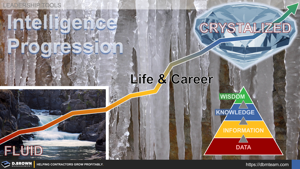Box Breathing: The 60 Second Mental Reset Tool
Box breathing can be used to reset yourself or a team in as little as 60 seconds. Impacts include sharper focus and working memory, lowered heart rate and blood pressure, and reduced stress hormones, resulting in less anxiety and a better overall mood.
healthBuilding Your Target Talent Model
Talent is the most constrained resource in the construction industry through at least 2030. With the industry's growth outlook, the contractors with the best Talent Value Streams (TVS) will dramatically outperform. Sadly, there will also be failures.
business planning management talentEmotional Intelligence: Building Inner Strength and Impact
Emotional intelligence competencies are the impact multiplier for your technical competencies. Daniel Goleman has spent his career focused on defining, evaluating, and building these capabilities.
emotional intelligence leadership managementBusiness Developer (and Management) Hurdles
Finding a customer that will pay you is the first thing a contractor does. Scaling the business development function with growth is one of the most challenging things a contractor must do for sustainability and succession.
business development growthThe Capability and Market Balance (The Chicken or Egg Dichotomy)
Sustainable growth for contractors requires balancing capabilities and capacity with the available market. Like balancing on the toes of one foot, balance is not a static relaxed state. It requires focus, continuous adjustments, and deliberate practice.
planning strategy talentDevelopment Progression (And Joy Level)
We’re all born with aptitudes waiting to be discovered or developed. From the start, we form preferences. How those preferences become strengths—and how we use them in life and business—shapes both our joy and competitiveness.
management talentFirst of a Kind: Managing to Accelerate Outcomes and Mitigate Risks
Special attention is required for all "First of a Kind" projects, job roles, processes, and tools. This is often overlooked, slowing down progress and creating unnecessary risks for contractors.
management riskProblem Solving Capabilities: From 3 Months to 3 Minutes
The first step of solving a problem is identification of the root-cause(s). That capability ranges from taking 3 months to 3 minutes. Understanding these ranges is the foundation of organizational structure, development, and succession readiness.
development succession trainingManagement System Hierarchy Example
A management system has hierarchies from culture through to the individual steps in a procedure. These hierarchies must be integrated with strategic decisions, the organizational structure, and training to create a competitive advantage.
managementIntelligence Progression from Fluid to Crystallized
Understanding fluid versus crystallized intelligence is critical for hiring, training, organizational structures, workflows, and retirement planning.
retirement succession talent